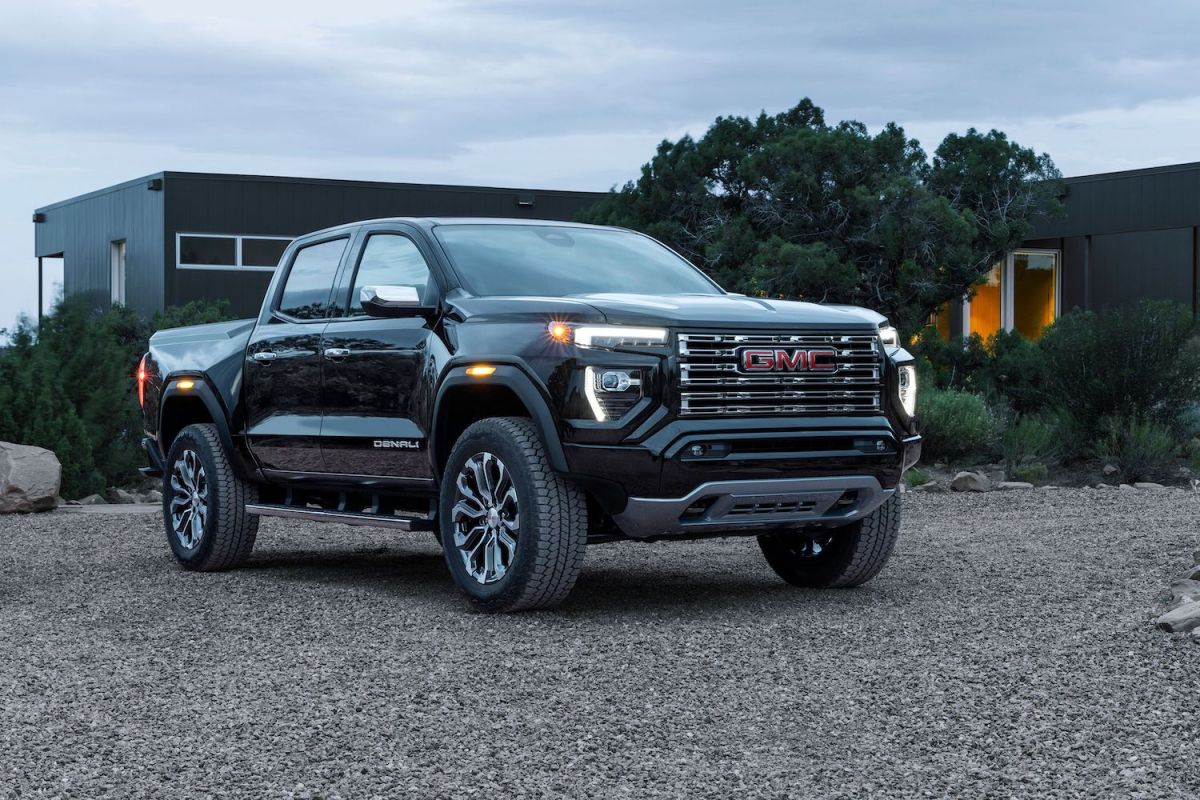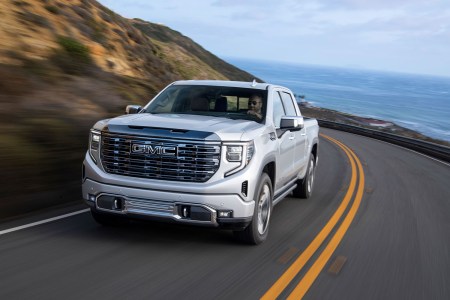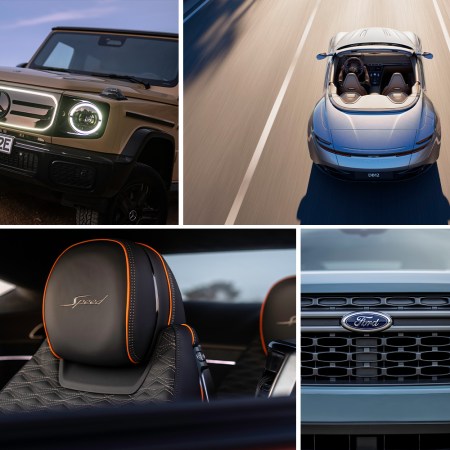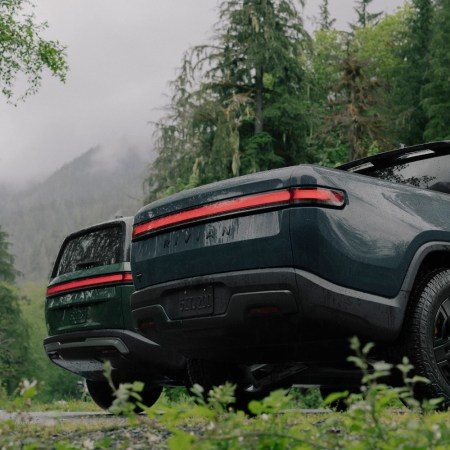There’s a baffling dichotomy dictating design decisions among the current crop of pickups: as trucks continue to get bigger, burlier and taller, their cargo boxes become increasingly truncated, in some cases shrinking down to vestigial tadpole tails only vaguely suited for legitimate hauling. This holds true for both full-size rigs and their mid-size companions, each of which has been hobbled by the same cab-first consideration that cripples the practicality of most models outside the task-focused heavy-duty set.
The 2023 GMC Canyon Denali is no exception. Despite a full redesign, the Canyon clings to the concept of maximizing interior volume at the expense of its hindquarters, with the Denali in particular restricted to a five-foot box that’s smaller than anything else available from the General’s fleet. Will well-heeled truck customers be just as concerned with the bitty-box cutoff, or will they find solace in other aspects of the pricy pickup’s presentation instead?
I was more than curious to see just how well the Denali formula fares when shrunk down outside of its natural monster truck trimmings. And I just had to know: what CAN you do with a five-foot box, anyway?
The Most Expensive Ladder You’ll Ever Buy
Answering that last question involved ignoring the Canyon Denali’s cargo length and instead focusing on what its height brings to the table. Although I live near the heart of Montreal, my neighborhood is known for its leafy green canopy of mature trees, a gorgeous selling point that didn’t exactly serve it well this past spring when an unexpected ice storm dropped thousands of branches across power lines and forced me to camp out inside a luxury EV during a 47-hour blackout.
The tree in front of my home victimized an unsuspecting minivan during the ice event, and while no serious damage was done after extricating the vehicle from under the collapsed limb, by the time summer rolled around it was clearly time to trim its abundant foliage. The weight of this year’s leaves had pulled multiple stalks increasingly close to the road, blanketing the sidewalk in darkness and tickling the tops of any auto careless enough to park under its tendrils.
Not possessing a ladder tall enough, nor the intestinal fortitude required to scale-and-snip, I tagged in the GMC to assist me on my arboreal assignment. It turns out that a standard household ladder fits much better inside the Denali’s box than, say, a sheet of 4×8 plywood or a mountain bike, giving me the vertical boost required to cut, hack, and saw the tree into a safer state. Not only that, but by parking the pickup directly underneath the leafy canopy I eliminated much of the clean-up by dropping branches directly into the cargo area for easy transport to the local dump — just so long as I chopped up the longer ones to fit within its tight confines.

The Outside Edge of Luxury
With the Canyon’s vertical credentials established, I turned my attention to the rest of the truck. GMC’s previous-generation Denali put in a decent performance in terms of power, and overall capability (albeit with unimpressive cabin comfort), but affixing the Denali stamp to the new model raises expectations across the board, especially given the updates made to the full-size Sierra Denali in recent years.
First and foremost these are expressed by the truck’s interior trappings. On its dash the Denali gets the same 11.3-inch touchscreen as every other model, albeit with a larger digital cluster behind the steering wheel as compared to base and mid-tier trims. I found myself frequently tapping on the big screen to access functions that would normally pull up using steering wheel buttons, with even the trip computer and headlight controls requiring a side quest to the center stack, but overall it’s a setup that presents well.
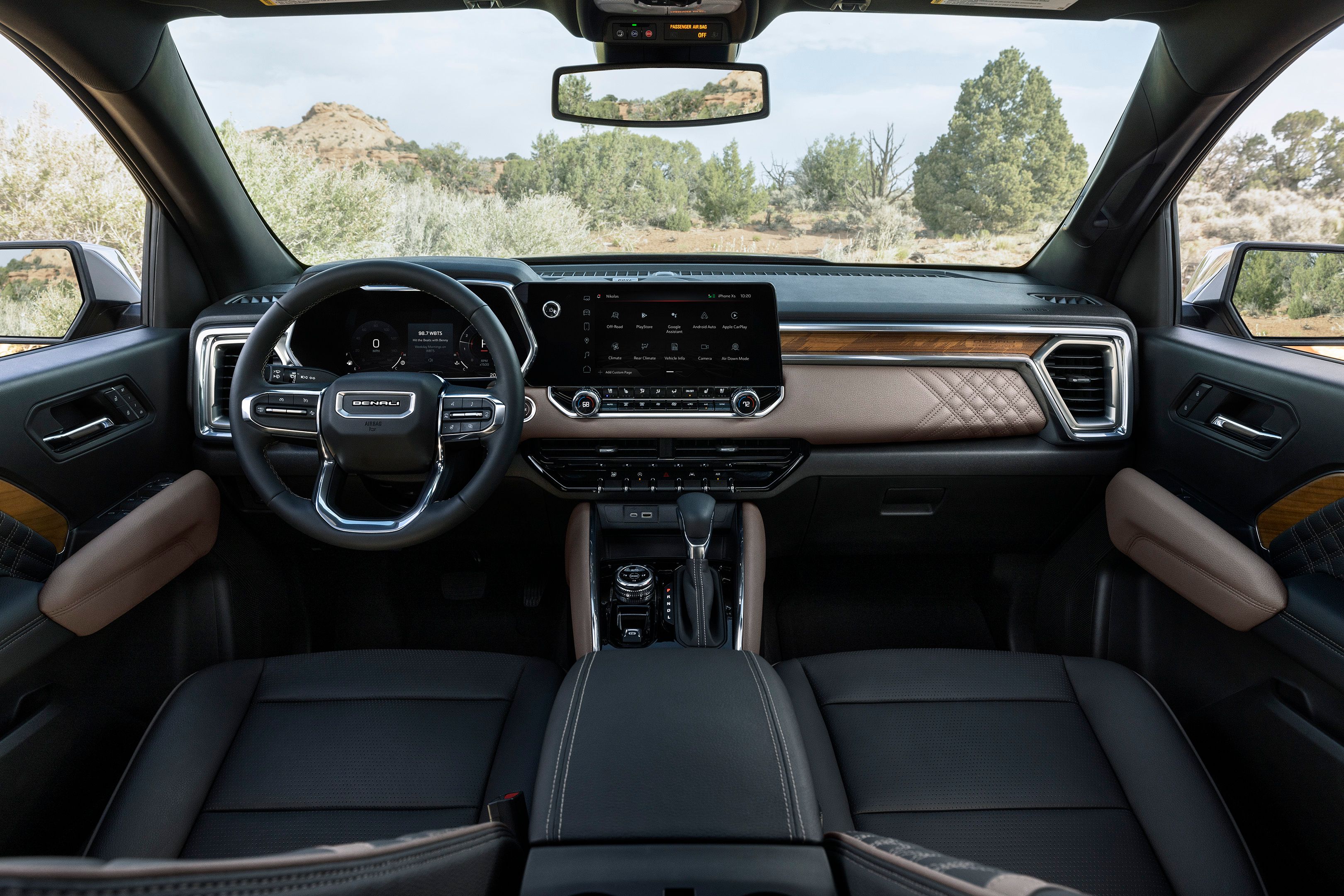
Also laudable are the seat designs, which were comfortable and presentable during and after a full day’s drive through the countryside. Rear seat riders under six feet will be comfortable enough squeezing into the second seating position of the Canyon’s crew cab, but we used it primarily to transport a whole heap of random boxes, luggage, and outdoor gear without even needing to flip up the bench.
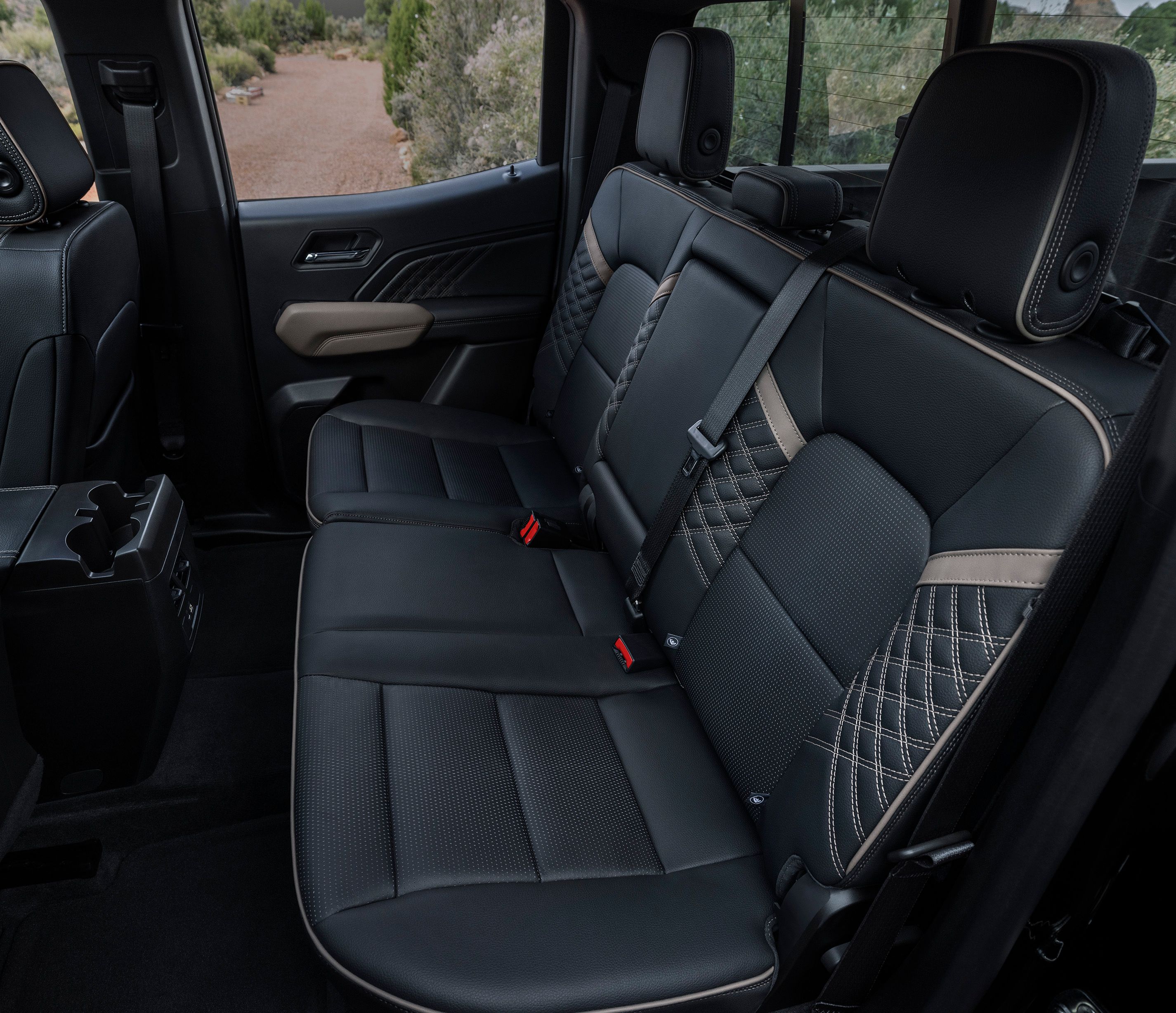
As to whether the Denali truly feels like a luxury option? While the switchgear and trim are generally quite nice, there are still areas where the hands will encounter cheaper, and in some cases wonkily installed plastics, particularly at the bottom of the dashboard. It’s a step up over the previous Canyon to be sure, and generally a more calming environment than one would find inside older versions of the Ford Ranger or Toyota Tacoma, but it’s not the major step forward that its $52,000 price tag would suggest. Features like heated and ventilated buckets, a heated steering wheel, a head-up display and ample outside chrome help make up for some of that.
Where’s My Magnetic Ride Control?
Another major change for the GMC Canyon — Denali or not — is found under the hood, where the truck gains the same 2.7-liter, turbocharged four-cylinder that originally debuted in the much larger Silverado. With 310 horsepower and 430 lb-ft of torque available through a standard 10-speed automatic transmission, the truck is considerably more mighty than most versions of the Chevrolet Colorado (with which it shares its platform). Don’t expect lightning-quick performance however, as that twist is tuned to come on low and serve truck owners best when towing.
Indeed, aside from the occasional turbo whistle you’d be hard pressed to identify that the Canyon is a torque monster in normal driving, as even highway pulls stay just this side of impressive while the speedometer sweeps. I had no issues with the GMC’s power delivery, but I was somewhat disappointed by how rough the motor felt at idle, with a detectable lump in its firing order making it into the cabin and subverting the Denali’s luxury aspirations.
Review: The GMC Sierra Denali Ultimate Is a Triumphant Truck Do-Over
In a hot luxury pickup market, GMC proves it can still hang with Ford and RamAlso differentiating the Canyon from the Colorado are its height and width, each of which gains inches on the Chevrolet (with the exact amount depending on the trim level ordered). The net effect on the GMC’s look gives it an almost trail-runner attitude, but don’t expect outstanding handling to go with those pushed-out axles, for what the additional track giveth, the taller ride height taketh away in the corners. I was surprised by how much lean the Denali exhibited through highway off-ramps, to the point where more than once a passenger expressed concern despite our modest rate of speed.
Keep the Canyon’s speeds in-bounds and you’ll do just fine on smooth pavement, but hit a bump hard enough and the Denali’s somewhat aggressive shock tune bounces and dives. It’s not a deal-breaker, rather a reminder that despite its mid-size dimensions this is still very much a truck, and one that doesn’t benefit from the magnetically-controlled damping found under the larger Sierra’s chassis.
A Good Start
GMC has worked much harder with this most recent Canyon to separate itself from its Chevrolet sibling. Park the trucks side-by-side, and you’ll easily discover the differences, and given the Canyon’s additional oomph and pushed-out axles, the drive feel is also distinct.
There’s a price to pay for the better-featured, more aggressively-styled Canyon. It’s more expensive at every step of the ladder as compared to a Colorado. The $52k window sticker on the Denali underscores that upscale positioning, but this truck also aims to outpace popular choices from Toyota, Ford and Nissan. There are bits and pieces of the GMC Canyon Denali that feel like they’re working hard enough to overpower the competition, yet as an overall experience something has been held back, especially when comparing the truck to its opulent full-size equivalent. The mini-Denali has room to grow — and maybe, just maybe, that includes tacking on the option of a truly useful box so buyers don’t have to choose between style and substance.
This article was featured in the InsideHook newsletter. Sign up now.
